ninana Wood, ritual patination height 13 1/4in (33cm) Provenance Pierre Loeb, Paris Bernard Dulon, Paris Dominik Remondino Collection, Switzerland Charles-Edouard Duflon, Geneva Private Collection, Switzerland Christopher Roy notes, "The Mossi produce several types of figures, including wooden figures that are used in burials, where they replace the corpse of the deceased chief. Smaller wooden figures are used in village ceremonies that honor the chief.[ . . . ] In contrast to masks, which are used by the Tengabisi in family religious ceremonies, figures are used by the Nakomsé in a political context, as visual affirmations of the nam or right to rule of the Naba . In some contexts the role of figures is similar to that of masks. Mossi figures are carved from a single piece of wood, and range in height from 40 to 100cm. The most notable style characteristics are an attenuated, cylindrical torso, arms extended rigidly at the sides with forearms parallel to the thighs.[ . . . ] The sex is usually clearly indicated. Most figures that survive in collections are female.[ . . . ] [ . . . ] it is quite common to find Mossi figures misattributed to other groups, because there are marked similarities between the Mossi style and the style of their Mandé neighbors, the Bamana and the Bobo, as well as other groups in Burkina Faso. In addition, there is a lack of style homogeneity in Mossi figure sculpture, and objects by two artists in neighboring villages may vary greatly in form.[ . . . ] It is important to remember that not all Mossi figures are female, and so may lack the sagittal crest that is too often used as the sole basis for attribution to the Mossi. Although male Mossi figures are rare outside Burkina, they are not unknown. For example, there is a male/female pair in the White collection in Seattle."( The Art of the Upper Volta Rivers , Alain and Francoise Chaffin, Paris, 1987, pp. 152-162) Carved of dense wood, the figure presented here is in an animated stance with his legs slightly bent at the knees, the arms are extended at the sides and run parallel to the thighs, the cylindrical torso below broad, squared shoulders supporting a cylindrical neck below the head with a face of narrow form with pierced eyes, bordered by raised crescent form ears and a sagittal crest on top; incised linear designs accentuate the chest, torso and legs; heavily-aged, gray-brown patina with areas of oil saturation.
ninana Wood, ritual patination height 13 1/4in (33cm) Provenance Pierre Loeb, Paris Bernard Dulon, Paris Dominik Remondino Collection, Switzerland Charles-Edouard Duflon, Geneva Private Collection, Switzerland Christopher Roy notes, "The Mossi produce several types of figures, including wooden figures that are used in burials, where they replace the corpse of the deceased chief. Smaller wooden figures are used in village ceremonies that honor the chief.[ . . . ] In contrast to masks, which are used by the Tengabisi in family religious ceremonies, figures are used by the Nakomsé in a political context, as visual affirmations of the nam or right to rule of the Naba . In some contexts the role of figures is similar to that of masks. Mossi figures are carved from a single piece of wood, and range in height from 40 to 100cm. The most notable style characteristics are an attenuated, cylindrical torso, arms extended rigidly at the sides with forearms parallel to the thighs.[ . . . ] The sex is usually clearly indicated. Most figures that survive in collections are female.[ . . . ] [ . . . ] it is quite common to find Mossi figures misattributed to other groups, because there are marked similarities between the Mossi style and the style of their Mandé neighbors, the Bamana and the Bobo, as well as other groups in Burkina Faso. In addition, there is a lack of style homogeneity in Mossi figure sculpture, and objects by two artists in neighboring villages may vary greatly in form.[ . . . ] It is important to remember that not all Mossi figures are female, and so may lack the sagittal crest that is too often used as the sole basis for attribution to the Mossi. Although male Mossi figures are rare outside Burkina, they are not unknown. For example, there is a male/female pair in the White collection in Seattle."( The Art of the Upper Volta Rivers , Alain and Francoise Chaffin, Paris, 1987, pp. 152-162) Carved of dense wood, the figure presented here is in an animated stance with his legs slightly bent at the knees, the arms are extended at the sides and run parallel to the thighs, the cylindrical torso below broad, squared shoulders supporting a cylindrical neck below the head with a face of narrow form with pierced eyes, bordered by raised crescent form ears and a sagittal crest on top; incised linear designs accentuate the chest, torso and legs; heavily-aged, gray-brown patina with areas of oil saturation.
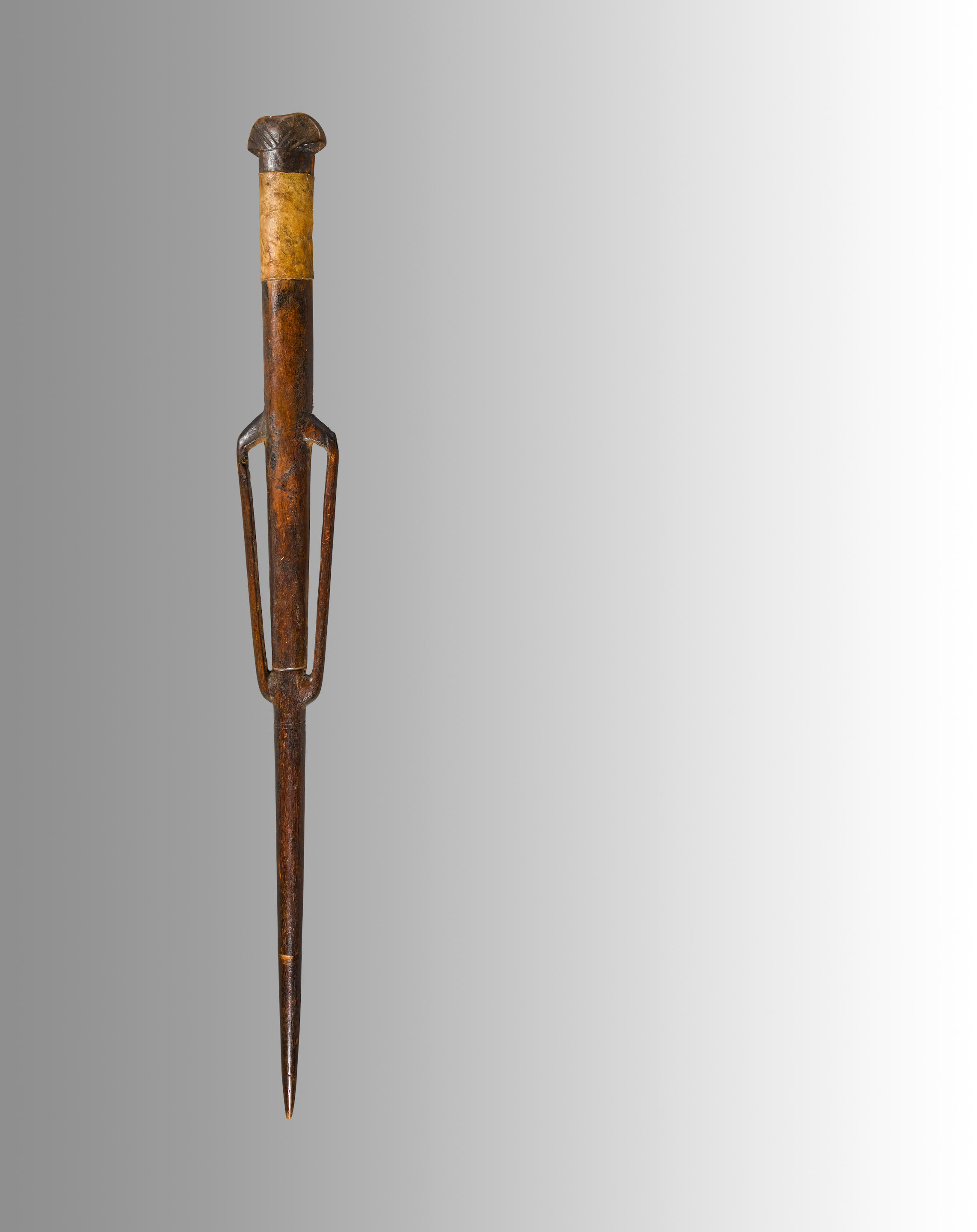

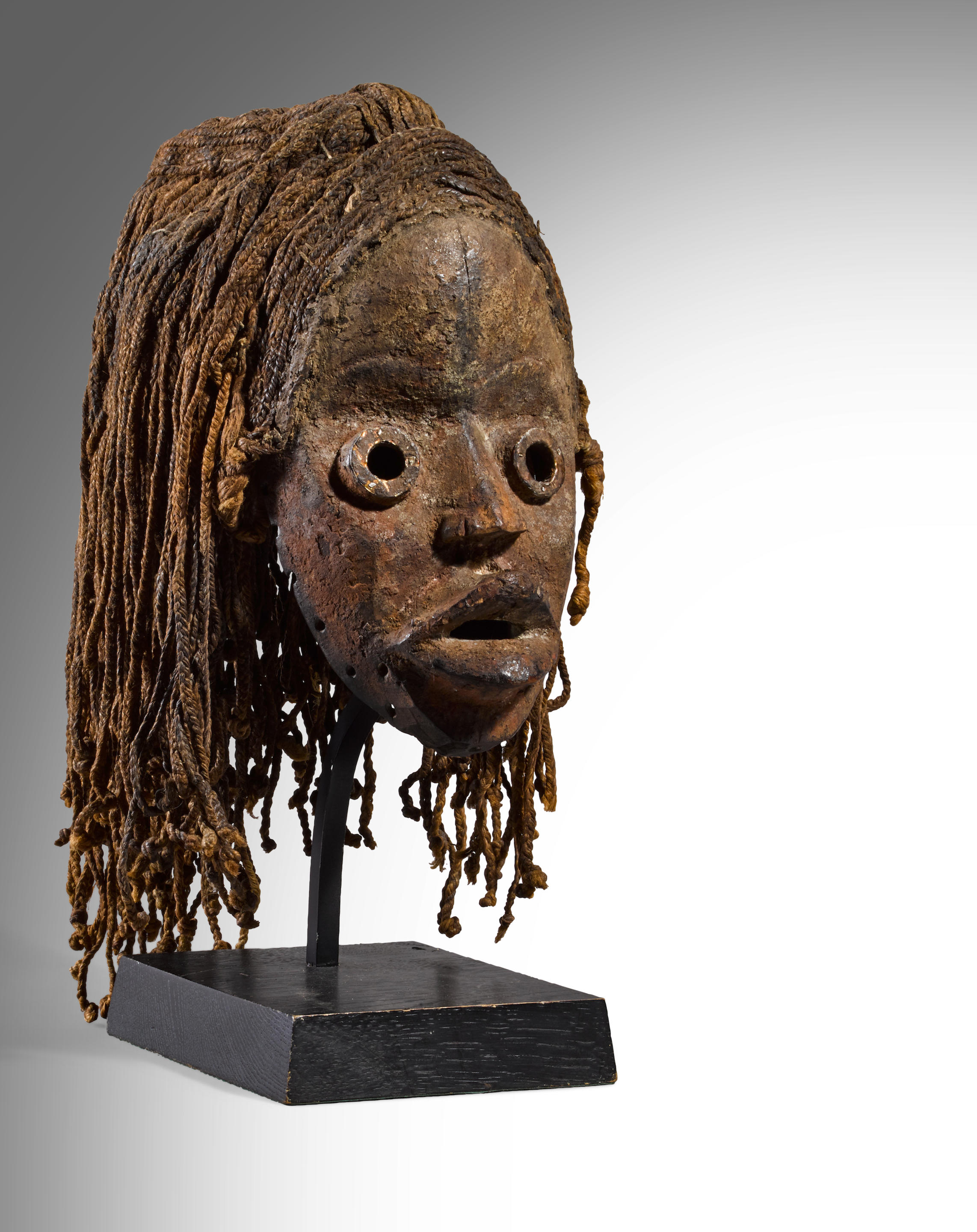



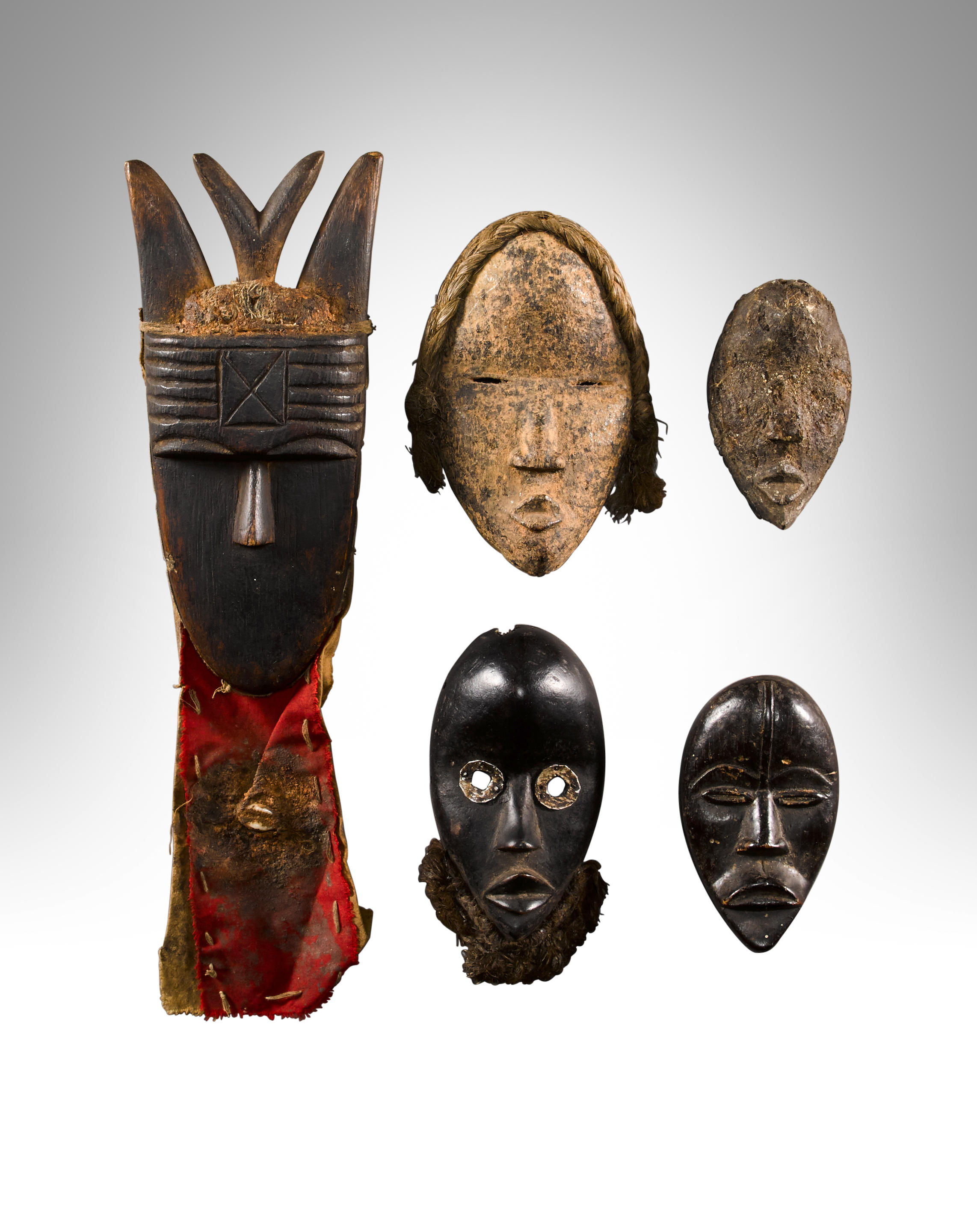
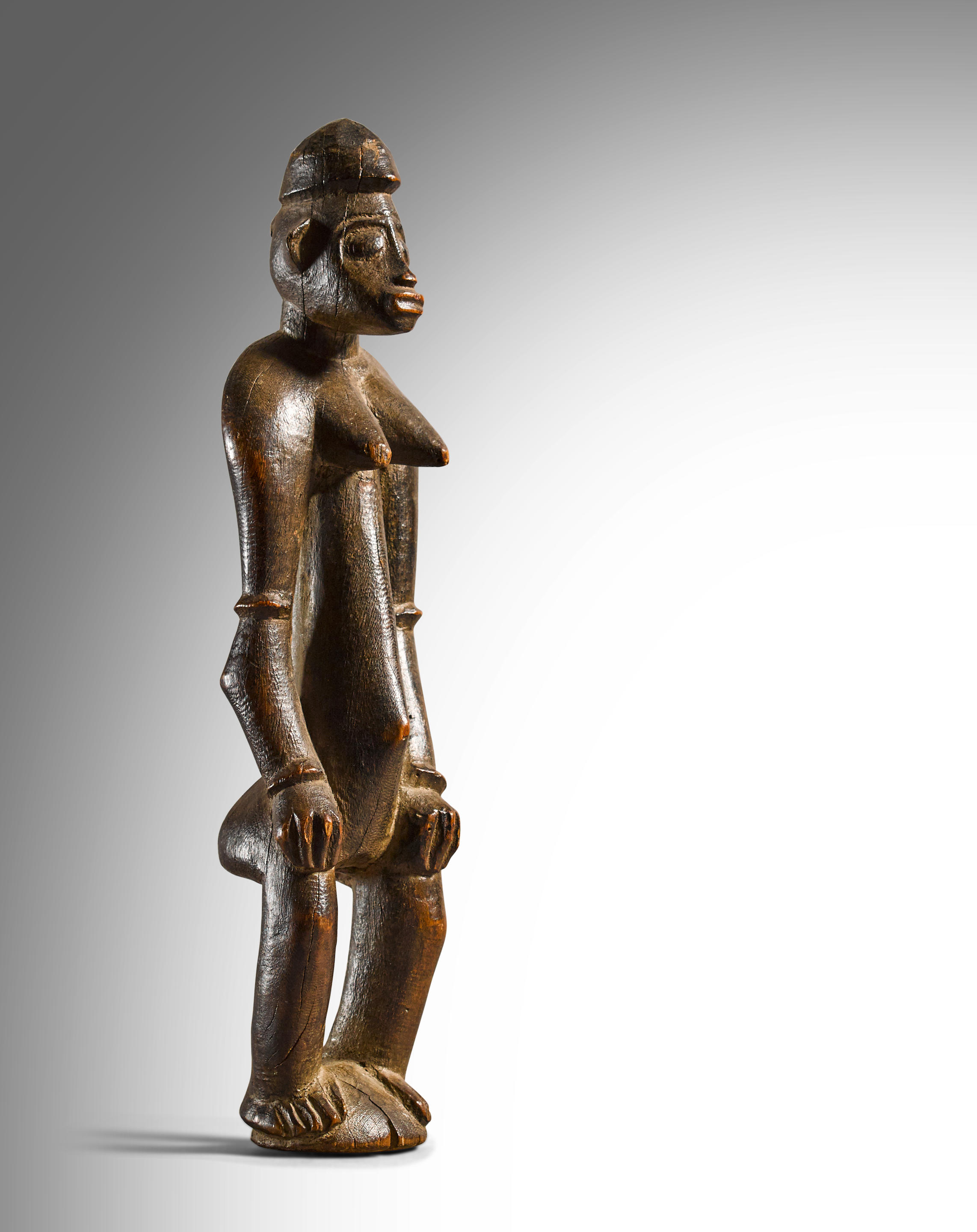
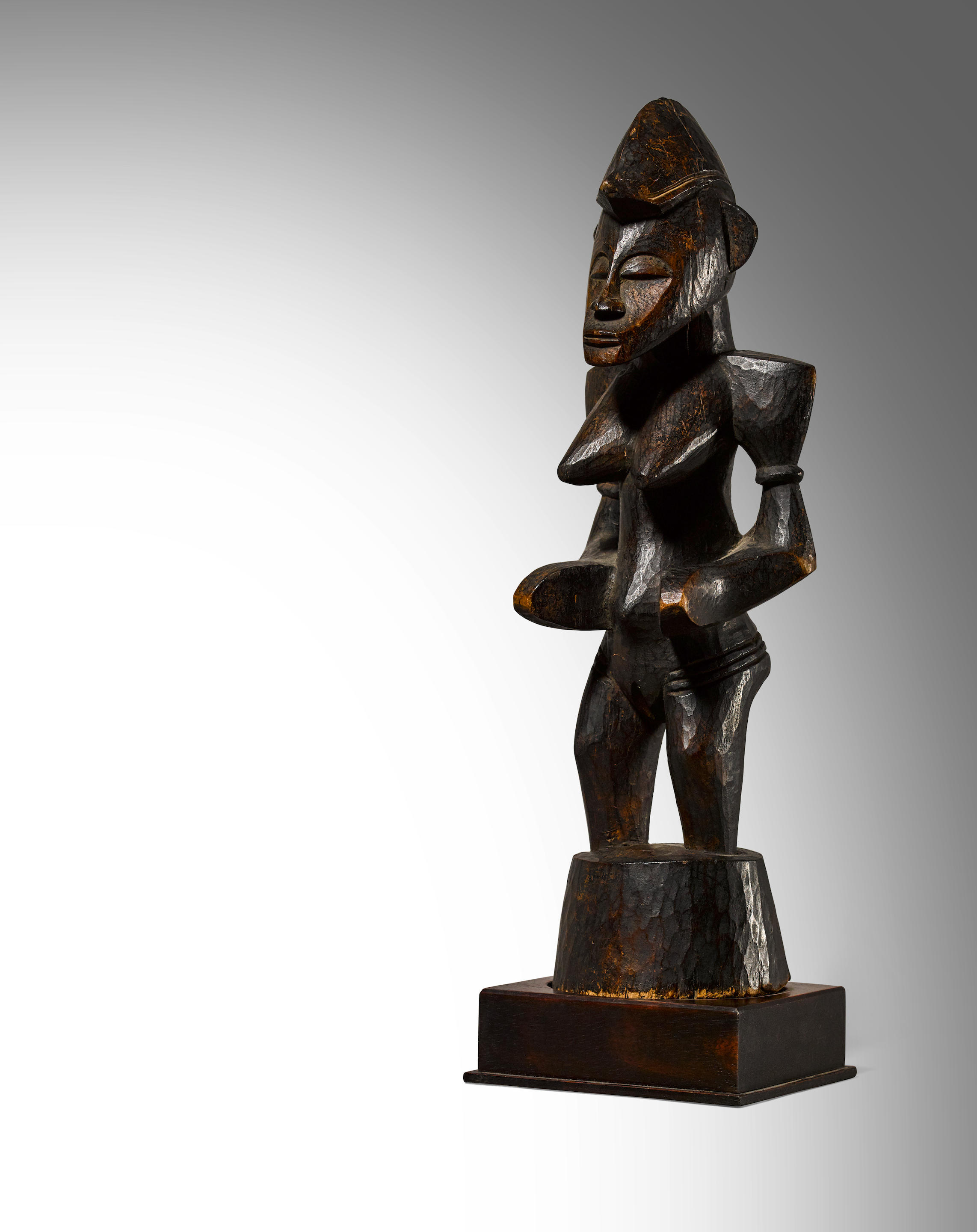
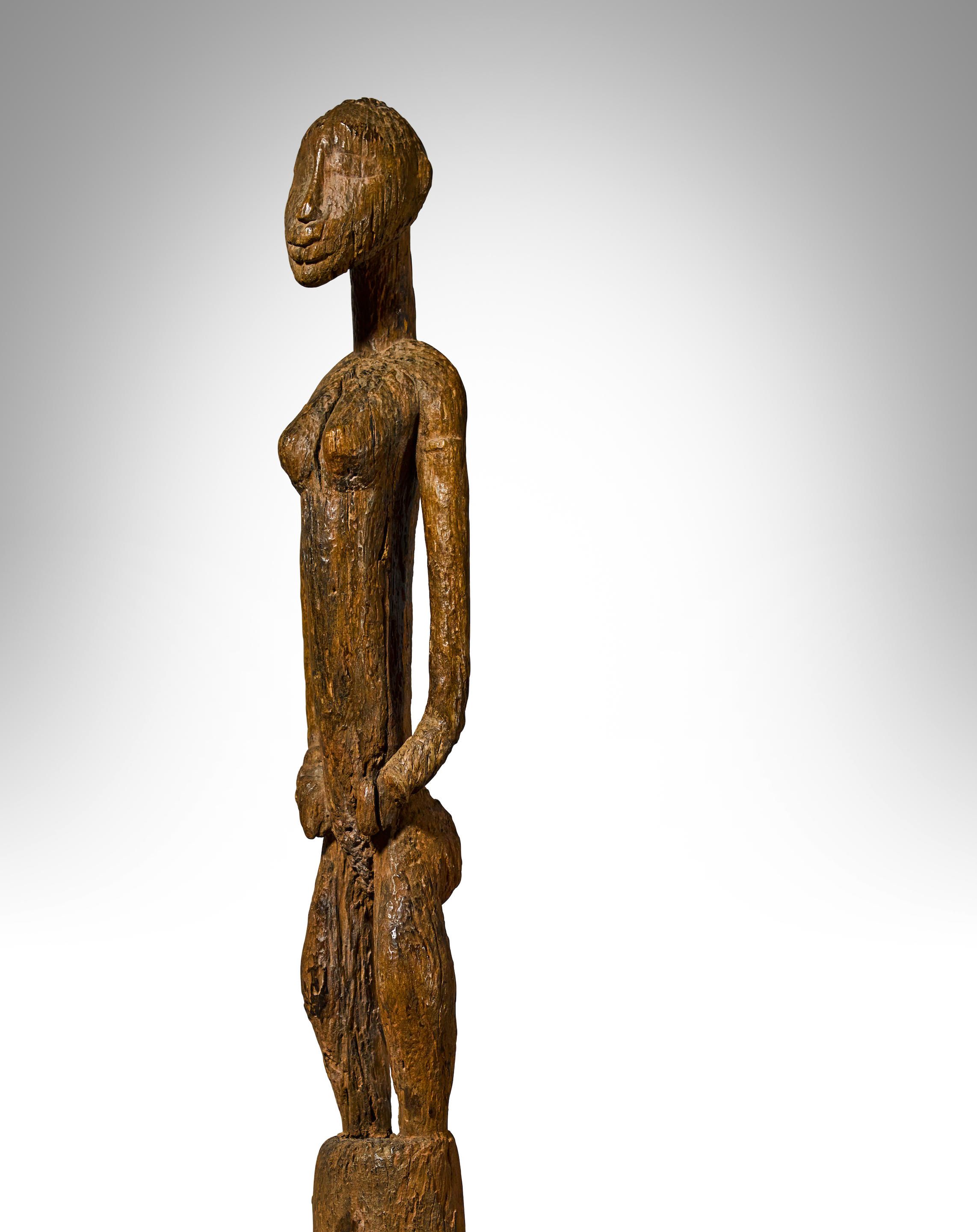

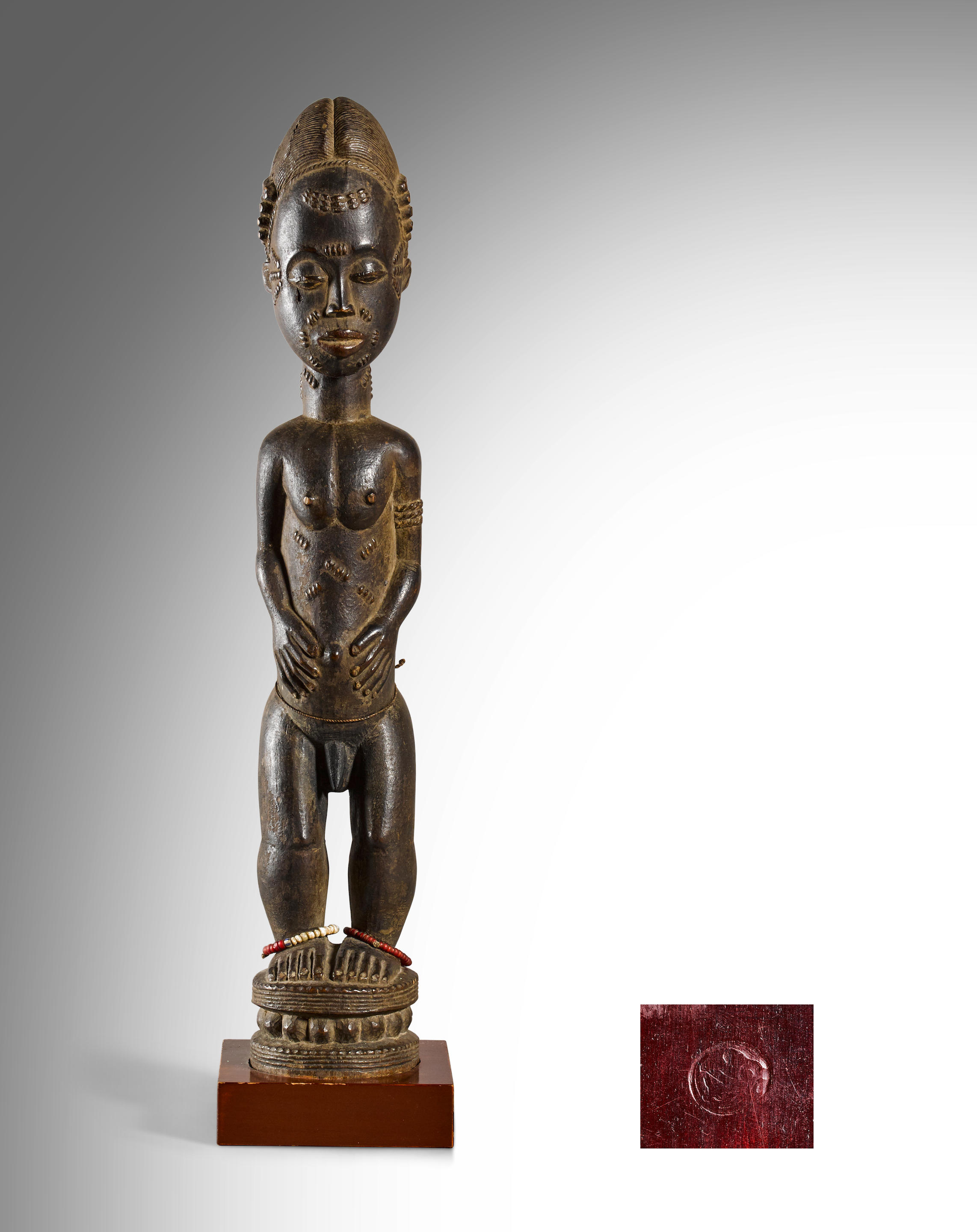
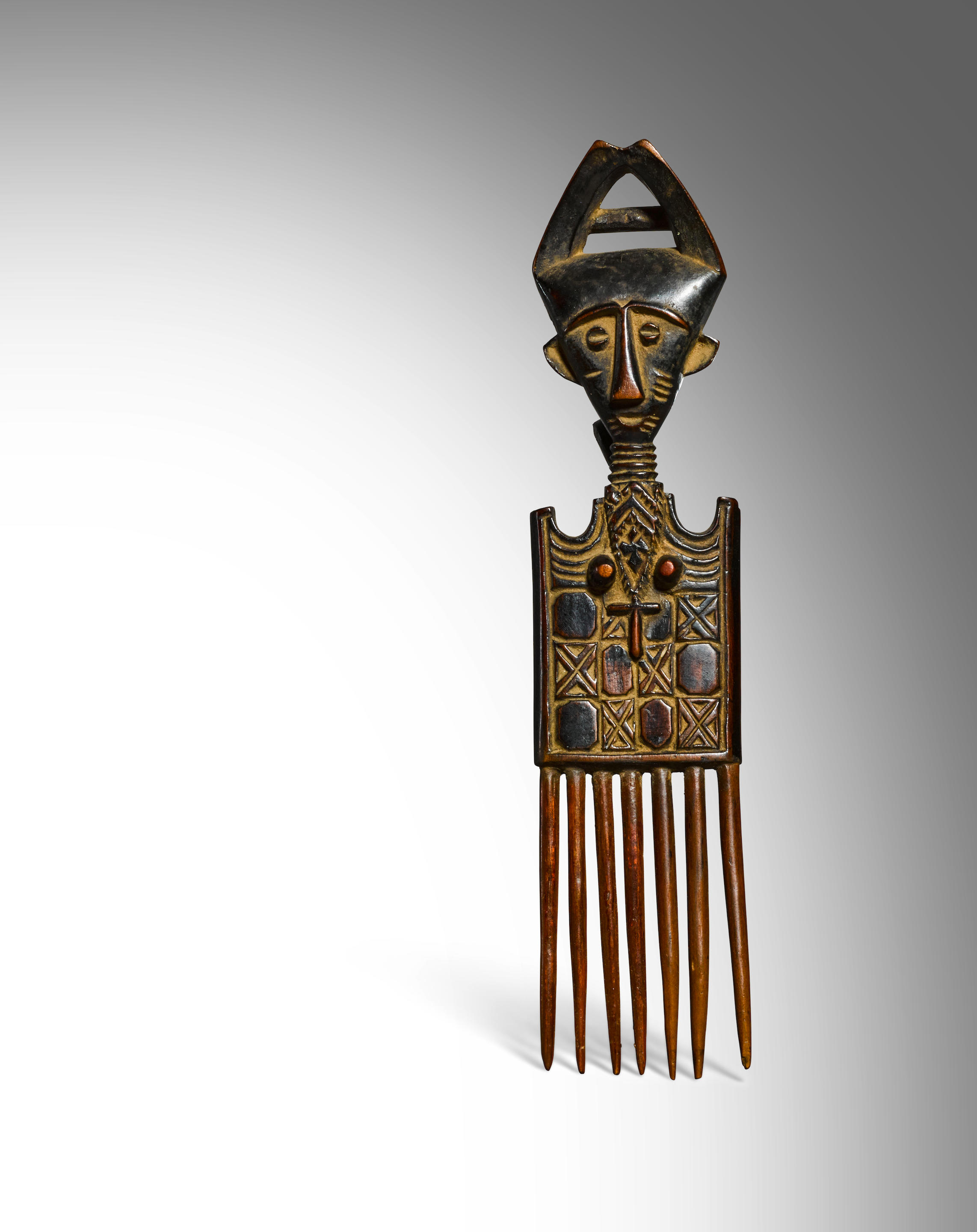
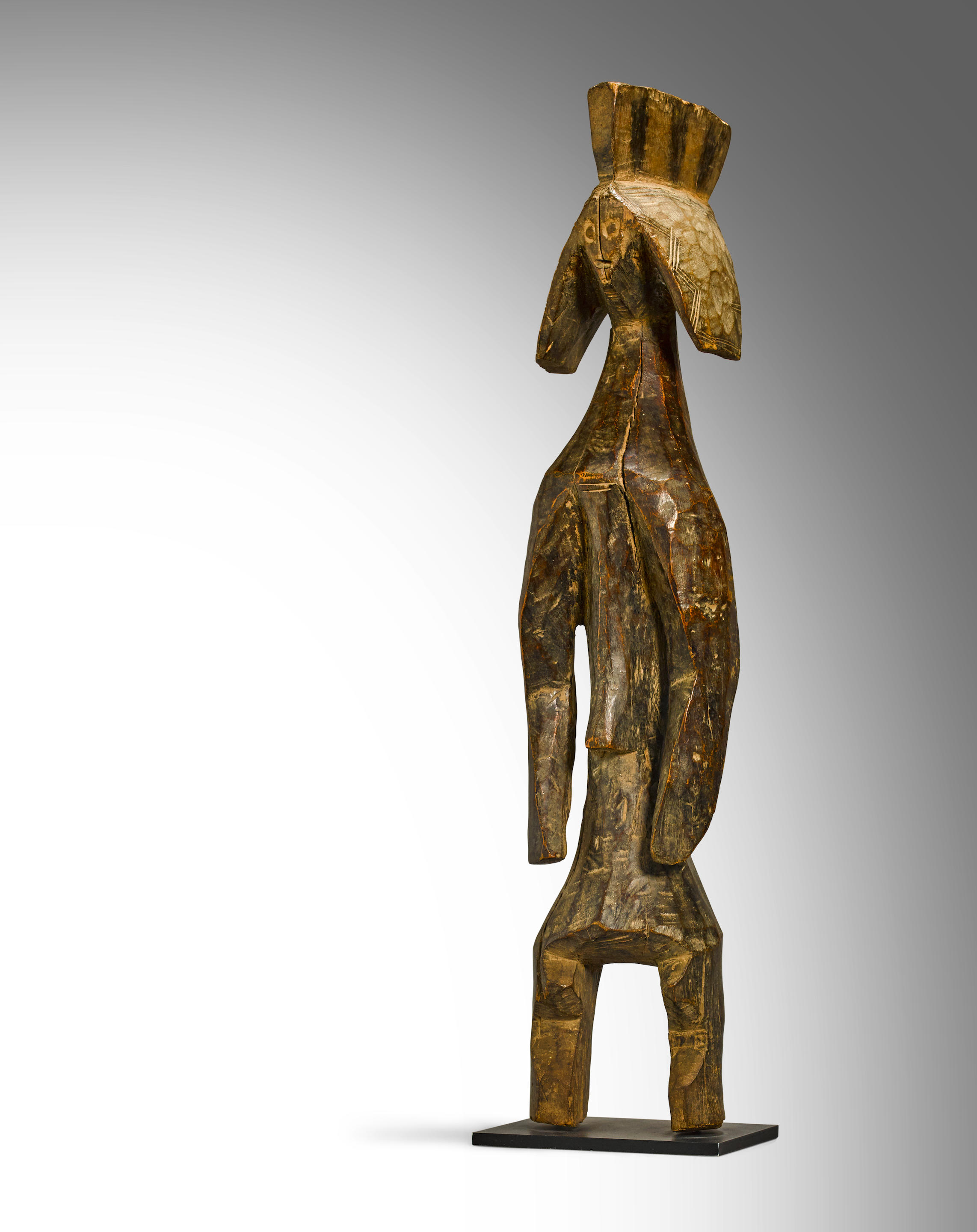
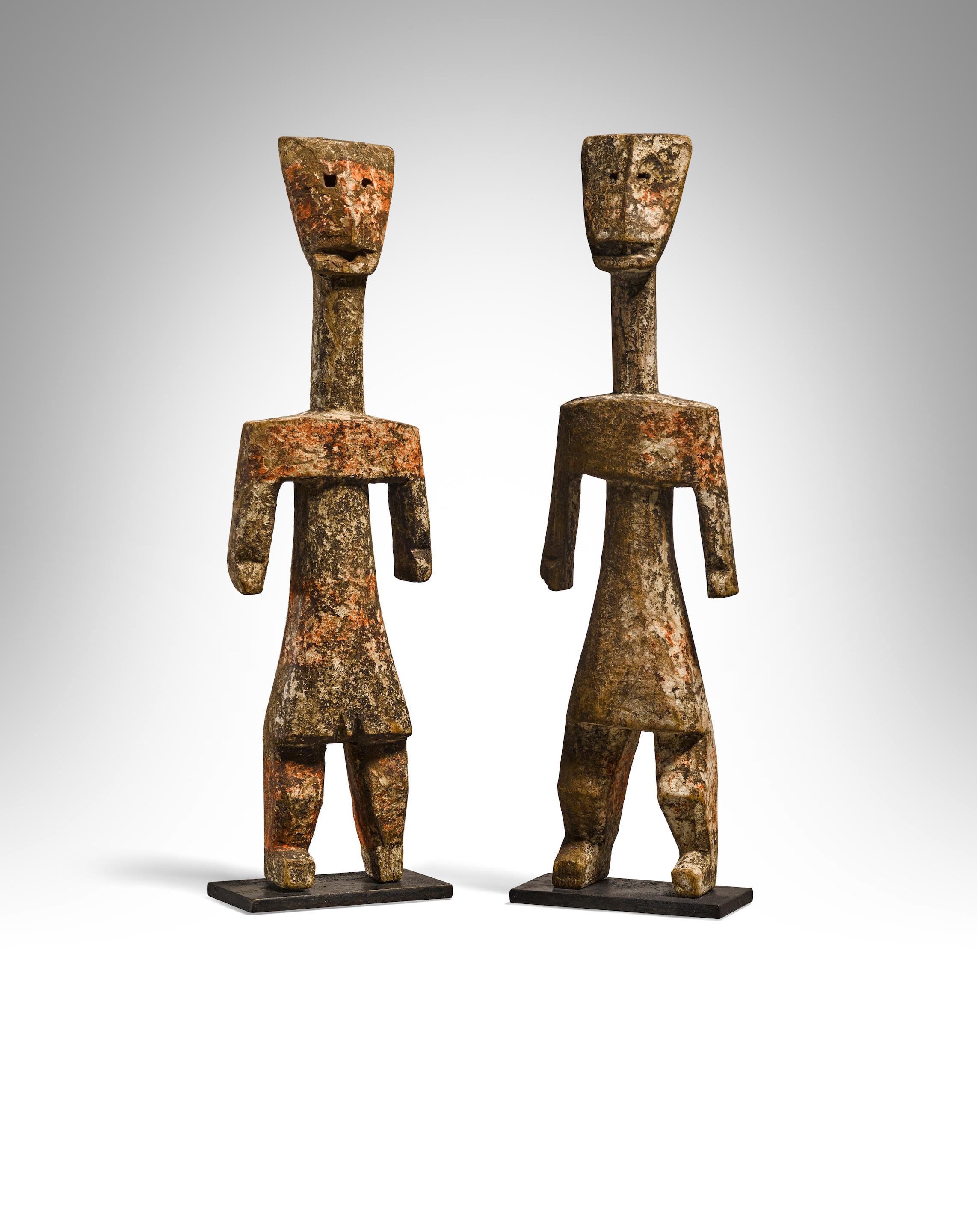
Try LotSearch and its premium features for 7 days - without any costs!
Be notified automatically about new items in upcoming auctions.
Create an alert